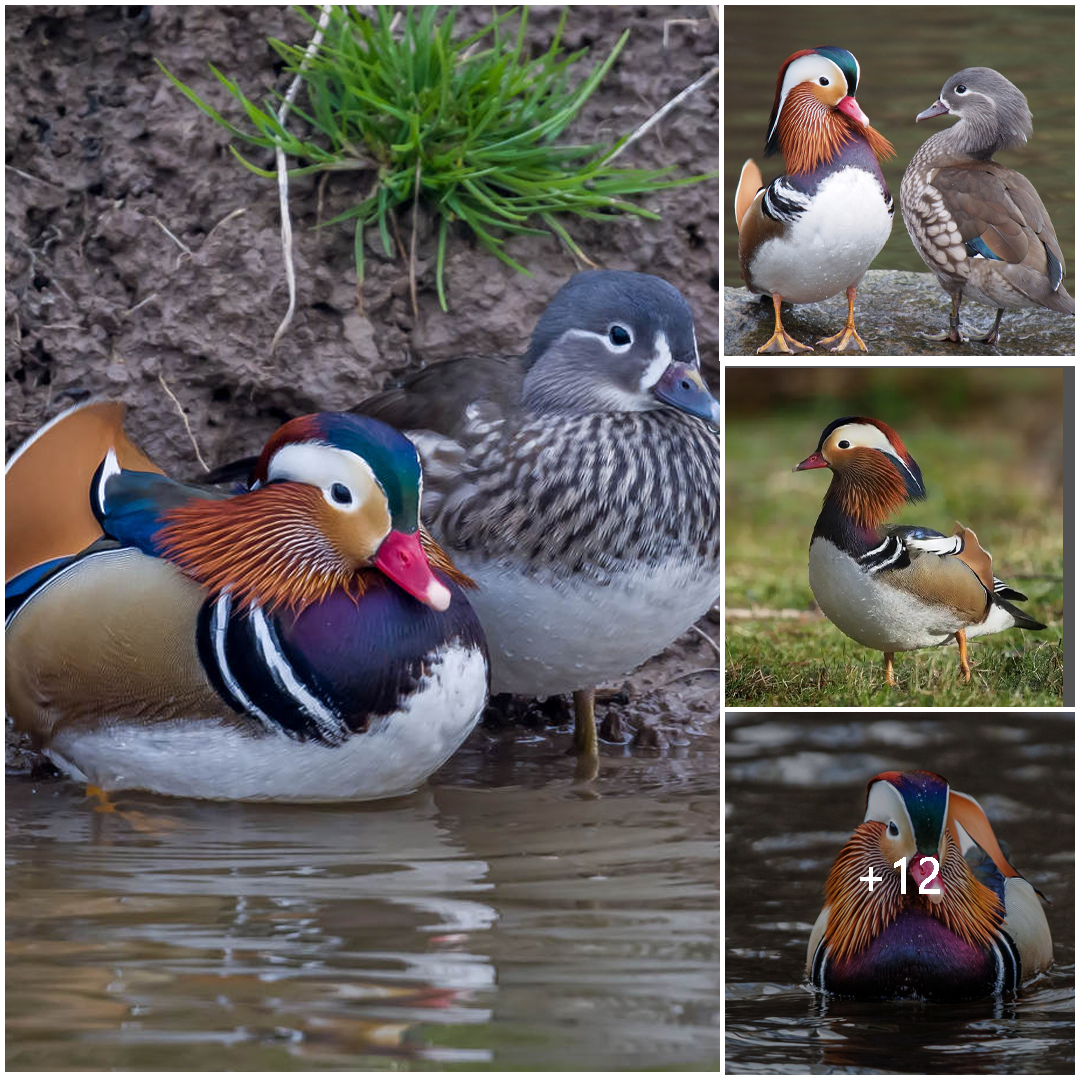
The Mandarin Duck: A Symbol of Beauty and Elegance
The Mandarin Duck, scientifically known as Aix galericulata, is a strikingly beautiful species of waterfowl native to East Asia. Renowned for its vibrant plumage and graceful demeanor, the Mandarin Duck holds a special place in both Eastern and Western cultures. Here is a closer look at this remarkable bird:
Appearance: The Mandarin Duck is characterized by its intricate and colorful plumage, making it one of the most visually stunning duck species in the world. Male Mandarin Ducks, known as drakes, exhibit a flamboyant array of colors, including iridescent greens, blues, purples, and oranges. Their distinctive crest, bright orange “sails” on the wings, and ornate facial markings further enhance their striking appearance. In contrast, female Mandarin Ducks have more muted plumage, with shades of brown and gray that provide camouflage during nesting.
Habitat and Distribution: Mandarin Ducks are primarily found in East Asia, including China, Japan, Korea, and parts of Russia. They inhabit forested areas near lakes, ponds, rivers, and marshes, where they can find suitable nesting sites and abundant aquatic vegetation for feeding. Despite their native range, Mandarin Ducks have been introduced to various parts of the world as ornamental birds in parks and gardens.
Behavior and Feeding Habits: Mandarin Ducks are typically shy and elusive birds, often seeking refuge in dense vegetation along the water’s edge. They are skilled swimmers and divers, using their webbed feet to propel themselves underwater in search of aquatic plants, seeds, insects, and small crustaceans. During the breeding season, male Mandarin Ducks engage in elaborate courtship displays to attract females, including head-bobbing, wing-flapping, and vocalizations.
Breeding and Nesting: Mandarin Ducks are monogamous during the breeding season, forming pair bonds that may last for several months or even years. Breeding pairs select secluded nesting sites in tree cavities or hollows near water, where they construct nests lined with down feathers and other soft materials. The female typically lays a clutch of 9-12 eggs, which she incubates for around 28-30 days. After hatching, the ducklings are precocial and able to swim and feed themselves shortly after leaving the nest.
Cultural Significance: In many cultures, the Mandarin Duck is revered as a symbol of love, fidelity, and prosperity. In Chinese folklore, Mandarin Ducks are often depicted as a pair of inseparable lovers, representing marital harmony and happiness. Their vibrant plumage and graceful demeanor have also made them popular subjects in traditional Chinese art and poetry. In Western cultures, Mandarin Ducks are admired for their beauty and are often kept in captivity as ornamental birds in parks and private collections.
Conservation Status: While the Mandarin Duck is not considered globally threatened, populations in some parts of its range are declining due to habitat loss, pollution, and hunting. Efforts to conserve and restore wetland habitats are crucial for maintaining healthy populations of Mandarin Ducks and other waterfowl species. Additionally, strict regulations on hunting and trade are necessary to prevent overexploitation and ensure the long-term survival of this iconic bird.
Conclusion: The Mandarin Duck captivates the imagination with its stunning beauty, cultural significance, and graceful presence. As a symbol of love and fidelity, this magnificent bird continues to inspire awe and admiration in people around the world. By protecting their natural habitats and raising awareness about their conservation needs, we can ensure that future generations have the opportunity to marvel at the splendor of the Mandarin Duck in the wild.





